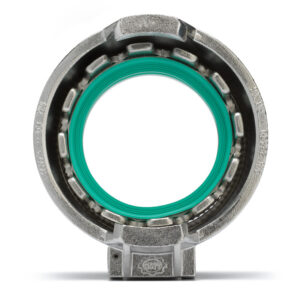Improve your forex trading with a stop loss
A stop loss can be defined as an (advanced) order to sell an asset when it reaches a certain price point. It is used to limit loss or to secure a profit in your trade. The concept can be used for both short-term and long-term trading. This is an automatic order that an investor places with the broker. Stop-loss is also called ‘stop order’ or ‘stop-market order’. By placing a stop-loss order, the investor instructs the broker to sell a security, commodity or currency pair when it reaches a pre-set price limit.
A stop-loss order is basically a tool used for short-term investment planning. It is used when the investor does not want the pressure of monitoring a security on a daily basis. The order is triggered automatically and the limits are determined in advance. This can be very helpful for small investors.
Stop-Loss Order – make sure you use it
With so many things to consider when deciding whether or not to buy a financial instrument, it is easy to leave out some important considerations. The stop-loss order may be one of these factors. When used properly, a stop-loss order can make a world of difference. And almost everyone can benefit from this tool.
What is a Stop-Loss Order?
A stop-loss order is an order placed with a broker to buy or sell a particular stock when the stock reaches a certain price. A stop-loss is designed to limit an investor’s loss on a financial position. For example, if you set a stop-loss order at 10% below the price you bought the stock at, your loss will be limited to 10%.
Suppose you just bought Microsoft (MSFT) at $20 per share. Immediately after buying the stock, you set a stop-loss order at $18. If the stock falls below $18, your shares will be sold at the current market price.
Stop-limit orders are similar to stop-loss orders. However, as their name says, there is a limit to the price they will perform. There are then two prices specified in a stop-limit order: the stop price, which will convert the order into a sell order but at the predetermined price. Instead of the order becoming a market order to sell, the sell order becomes a limit order that will only be executed at the predetermined price (or better).
Advantages of Stop-Loss Orders
The main advantage of a stop-loss order is that it costs nothing to execute. Your regular commission is only charged when the stop loss price is reached and the stock has to be sold. One way to think of a stop-loss order is as a free insurance policy.
An additional benefit of a stop-loss order is that it allows decision-making to be free from emotional influences. People tend to ‘fall in love’ with their investments. For example, they may maintain the false belief that if they give the stock another chance, it will turn around. In fact, this delay can only cause further losses.
Whatever type of investor you are, you should be able to easily identify why you own a stock or a currency. The criteria of a value investor will differ from those of a growth investor, which will differ from the criteria of an active trader. Whichever strategy it is, the strategy will only work if you stick to the strategy. So if you’re a hardcore buy-and-hold investor, your stop-loss orders are almost worthless.
At the end of the day, if you’re going to be a successful investor, you need to be confident in your strategy. This means implementing your plan. The advantage of stop-loss orders is that they can help you stay on track and prevent your judgment from being clouded by emotion.
Finally, it is important to realize that stop-loss orders do not guarantee that you will make money in the stock market. You still need to make intelligent investment decisions. If you don’t, you will lose as much money as you would without stop loss (just at a much slower rate).
Stop-loss orders are also a way to secure profits.
Stop-loss orders are traditionally seen as a way to prevent losses. However, another use of this tool is to lock in profits. In this case, stop-loss orders are sometimes referred to as “trailing stops”. Here the stop-loss order is set at a percentage level below the current market price (not the price at which you bought it). The price of the stop-loss is adjusted when the share price fluctuates. It’s important to remember that if a stock goes up, you have an unrealized gain; you don’t have cash in hand until you sell. By using a trailing stop, you can let the profit run, while guaranteeing at least some realization gain.
Continuing with our Microsoft example from above, suppose you set a trailing stop order at 10 percent below the current price, and the stock shoots up to $30 within a month. Your trailing stop order would then lock in at $27 per share ($30 – (10 percent x $30) = $27). Since this is the worst price you would get, even if the stock takes an unexpected dip, you will not suffer a loss. Of course, remember that the stop loss order is still a market order. It simply remains dormant and is only activated when the predetermined price is reached. So the price that your sale actually trades at may be slightly different from the stated trigger price.
Disadvantages of Stop-Loss Orders
An advantage of a stop-loss order is that you don’t have to monitor how a stock performs on a daily basis. This convenience is particularly handy when you are on vacation or in a situation that prevents you from looking at your shares for an extended period.
The main disadvantage is that a short-term fluctuation in the share price can activate the stop price. The key is to choose a stop-loss percentage that allows a stock to fluctuate day-to-day, while preventing as much downside risk as possible. Setting a 5 percent stop-loss order on a stock that has previously fluctuated 10 percent or more in a week may not be the best strategy. You will most likely only lose money on the commission generated from the execution of your stop-loss order.
There are no set rules for the level at which stops should be placed; it depends entirely on your individual investment style and the volatility of the financial asset. An active trader might use a 5 percent level, while a long-term investor might choose 15 percent or more.
Another thing to keep in mind is that when you reach your stop price, your stop order becomes a market order. So the price you sell can be very different from the stop price. This is particularly true in a market where prices can change rapidly. Another limitation with the stop-loss order is that many brokers do not allow you to place a stop order on certain securities such as OTC Bulletin Board stocks or penny stocks.
Stop-limit orders have additional potential risks. These orders can guarantee a price limit, but the trade may not be executed. This can harm investors during a fast market if stop orders are triggered, but the order is not filled before the market price falls through the limit price. If bad news comes out about a company and the limit price is $1 or $2 below the stop-loss price, the investor must hold on to the stock for an indefinite period before the stock price rises again. Both types of orders can be entered as either day or good till canceled (GTC).
Stop-Loss vs. Stop-Limit Order: Which order should you use?
Traders and investors who want to limit potential losses can use several types of orders to enter and exit the market at times when they may not be able to place an order manually. Stop-loss orders and stop-limit orders are two tools to achieve this. However, it is important to understand the difference between these two tools.
A sell-stop order is a type of stop-loss order that protects long positions by triggering a market sell order if the price falls below a certain level.
A buy-stop order is a type of stop-loss order that protects short positions; it is set above the current market price and is triggered if the price rises above that level.
Stop-limit orders are a type of stop-loss, but at the stop price the order becomes a limit order – only executed at the limit price or better.
Stop-loss order
There are two types of stop-loss orders: one to buy and one to sell:
Sell-stop orders
Sell-stop orders protect long positions by triggering a market sell order if the price falls below a certain level. The underlying assumption behind this strategy is that if the price falls this far, it can continue to fall much further. The loss is limited by selling at this price.
For example, let’s say a trader owns 1000 shares of ABC stock. The trader bought the stock at $30 per share, and it has risen to $45 on rumors of a potential takeover. The trader wants to lock in a profit of at least $10 per share, so the trader places a sell stop order at $41. If the stock drops back below this price, the order becomes a market order and is filled at the current market price, which may be more (or more likely less) than the stop-loss price of $41. In this case, the trader gets $41 for 500 shares and $40.50 for the rest. But the trader will keep most of the profit.
Buy-stop orders
Buy-stop orders are conceptually the same as sell-stop orders. However, they are used to protect short positions, i.e. short selling. A buy-stop order price is above the current market price and will be triggered if the price rises above that level.
Stop-limit order
Stop-limit orders are similar to stop-loss orders. But as the name says, there is a limit to the price they will perform. There are two prices specified in a stop limit order: the stop price, which converts the order into a sell order, and the limit price. Instead of the order becoming a market order to sell, the sell order becomes a limit order that will only be executed at the limit price or better.
Of course, there is no guarantee that this order will be filled, especially if the share price rises or falls rapidly, such as in the case of a profit warning. Stop-limit orders are sometimes used because the investor does not want to sell and is willing to wait for the price to rise back to the limit price, if the price of the stock or other security falls below the limit.
For example, let’s assume that ABC stock never drops to the stop-loss price, but it continues to rise and eventually reaches $50 per share. The trader cancels his stop-loss order at $41 and places a stop-limit order at $47, with a limit of $45. If the share price falls below USD 47, the order becomes a live order. If the share price falls below $45 before the order is filled, the order remains unfilled until the price climbs back to $45.
Many investors will cancel their limit orders if the share price falls below the limit price because they only placed them to limit their loss when the price fell. Since they missed the chance to get out, they will simply wait for the price to go up again. They may not want to sell at that limit price at that time if the stock continues to rise.
As with buy-stop orders, buy-stop limit orders are used for short sales, when the investor is willing to risk waiting for the price to rebound if the purchase is not made at the limit price or better.
It is important for active traders to take appropriate measures to protect their trades against significant losses.
Benefits and risks of Stop-Loss and Stop-Limit Orders
Stop-loss and stop-limit orders can provide different types of protection for investors. Stop-loss orders can guarantee execution, but price and price slippage often occurs at runtime. Most stop loss orders are filled at a price lower than the price that triggers it; the difference depends largely on how quickly the price drops. An order can be filled at a significantly lower price if the price drops quickly.
Stop-limit orders can guarantee a price limit, but the trade may not be executed. This can leave the investor with a significant loss in a fast market if the order is not filled before the market price drops through the limit price. If bad news comes out about a company and the limit price is very close to the stop-loss price, the investor has to hold on to the stock for an indefinite period before the share price rises again. Both types of orders can be entered as either day or good to canceled (GTC).
Choosing which type of order to use essentially means deciding which type of risk is better to take. The first step to using either type of order correctly is to carefully assess how the stock is trading.
If the stock is volatile with significant price movement, a stop-limit order may be more effective because of its price guarantee. If the trade is not executed, the investor may only have to wait a short time for the price to rise again. A stop-loss order would be appropriate if, for example, bad news comes out about a company that has doubts about its long-term future. In this case, the share price may not return to its current level for months or years (if it ever does). Investors would therefore be wise to cut their losses and take the market price when selling. A stop-limit order can result in a much larger loss if it is not executed.
Another important factor to consider when placing any of the orders is where to set stops and the limited price. Technical analysis can be a useful tool here; stop-loss prices are often placed at levels of technical support or resistance. Investors who place stop-loss orders on stocks that are rising steadily should make sure to give the stock some room to fall back. If they set their stop price too close to the current market price, they may be stopped out of their position due to a relatively small price movement. They can also miss when the price starts to rise again.
Stop-loss and stop-limit orders can provide different types of protection for both long and short investors. Stop-loss orders guarantee execution, while stop-limit orders guarantee the price.
About the Viking
With Viking’s signals, you have a good chance of finding the winners and selling in time. There are many securities. With Viking’s autopilots or tables, you can sort out the most interesting ETFs, stocks, options, warrants, funds, and so on.
Click here to see what Vikingen offers: Detailed comparison – Stock market program for those who want to get even richer (vikingen.se)













